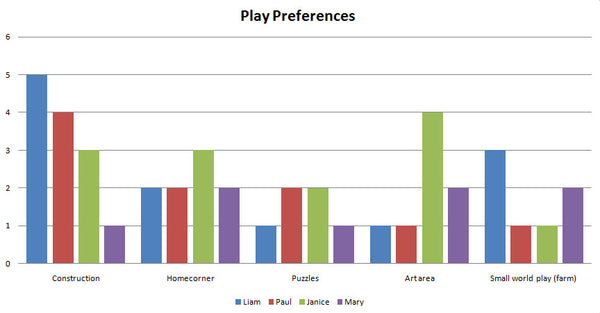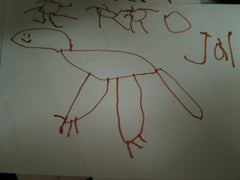Exploring Holistic Approaches for Early Childhood Educators
With a growing body of world research emphasizing the importance of holistic approaches to education, early childhood educators are being challenged to incorporate a teaching practice that focuses less on the traditional milestones of academic development, and more on the complete physical, emotional and psychological wellbeing of a child (UNESCO, 2002). The research is compelling and studies show that over time, even persons with average IQ (Intellectual Intelligence) but with high EI (Emotional Intelligence) are significantly more successful than those with much higher IQs but low EI (Goleman, 1995).
So what does this mean for an early childhood educator? The Australian Department of Education, Employment and Workplace Relations (DEEWR) as part of the Early Years Learning Framework (EYLF) describes:
Holistic approaches to teaching and learning recognize the connectedness of mind, body and spirit. When early childhood educators take a holistic approach they pay attention to children’s physical, personal, social, emotional and spiritual wellbeing as well as cognitive aspects of learning. While educators may plan or assess with a focus on a particular outcome or component of learning, they see children’s learning as integrated and interconnected. They recognize the connections between children, families and communities and the importance of reciprocal relationships and partnerships for learning. They see learning as a social activity and value collaborative learning and community participation. An integrated, holistic approach to teaching and learning also focuses on connections to the natural world. Educators foster children’s capacity to understand and respect the natural environment and the interdependence between people, plants, animals and the land (DEEWR, 2009).
Teaching Philosophies that Embrace Holistic Approaches

Over the last few decades many varied holistic education philosophies have emerged. Montessori prescribed a “prepared environment” containing specific materials that children use, independently for the most part, to learn at their own pace, responding to particular readiness for specific sensory and intellectual stimuli. Rudolf Steiner‘s ‘Waldorf’ approach is based on intuitive (his followers claim clairvoyant) understanding of the needs of the evolving soul at each level of development: children in Waldorf schools are divided into grades according to age and spend most of their time learning through group activities carefully planned and led by the teacher (who is also supposed to have intuitive insight into children’s personalities and immediate needs) (Miller, n.d). Some holistic approaches (for example, Quaker schools, or “neo-humanist” education based on the teachings of Tantric guru P.R. Sarkar) have adopted meditation, periods of silent reflection or journaling, yoga and other centering practices (Kesson, 2002). Other holistic approaches (the Reggio Emilia system of early childhood education comes to mind) place great emphasis on artistic self-expression and engaged creativity. Krishnamurti, on the other hand, advised against methods as such and suggested that a caring, open, non-authoritarian relationship between people leads to genuine learning (Forbes, 2002)(Miller,n.d).
Methods for Implementing Holistic Approaches
While there is clearly no one method, Miller (2006) after review of a number of different holistic teaching methodologies, describes four key aspects of holistic approach based teaching:
1. Learning is organic, emergent, experimental and based on cooperation. Pre-planned teaching is facilitated only so far as to initiate open ended questioning and inquiry;
2. There is a strong sense of community and engagement between children, parents and educators where those members feel strongly to care for one another
3. There is a great respect for children’s interior life, with methods ranging from environmental spaces that facilitate time out of competitive nosier environments, to time to ask deeper questions about the meaning of life and spirituality.
4. There are strong connections to nature, with the care and connection to the environment incorporated throughout the curriculum.
In another interesting article by Ron Miller he describes the aspirations of the holistic educator:
Holistic education aims to call forth from people an intrinsic reverence for life and a passionate love of learning. This is done, not through an academic "curriculum" that condenses the world into instructional packages, but through direct engagement with the environment. Holistic education nurtures a sense of wonder. Montessori, for example, spoke of "cosmic" education: Help the person feel part of the wholeness of the universe, and learning will naturally be enchanted and inviting. There is no one best way to accomplish this goal, there are many paths of learning and the holistic educator values them all; what is appropriate for some children and adults, in some situations, in some historical and social contexts, may not be best for others. The art of holistic education lies in its responsiveness to the diverse learning styles and needs of evolving human beings (Miller, n.d).
What Do Holistic Approaches Look Like in Practice?
Taking responsibility for development of a “whole child” however is a significant endeavor for any early childhood educator: guiding students to finds identity, meaning, and purpose in life through connections to the community, to the natural world, and to spiritual values such as compassion and peace. Rather than be overwhelmed by the many varied ideals of holistic education, it is recommended teachers find opportunities (approaches) to implement the various elements of holistic education into their practice.
An helpful example of this could be further exploration and extension of child’s interests, taking a small idea and unpacking it into many opportunities for learning: an interest in cars could be expanded into: where cars came from; the first wheel; what types of cars are used around the world; what type of people use cars; understanding if and why their family uses a car; why other people use cars; how over use of cars can affect our health; what cars are doing to our environment; alternatives to cars; new designs to overcome environmental impact etc. This example shows us how an early childhood teacher can expand learning into all aspects of a child’s life including family, the environment, history, empathy and understanding.
Another example could be offering art with pastels, exploring different artists in history, colours, how light makes colour, rainbows, how pastels are made, the earliest pastels made by indigenous people, their drawings and what they tell us about them, what other materials to draw on, people who use pastels from architects to street art, using pastels to explore our feelings and express our moods etc.
Finally another very important example is working with families. Engaging families by inviting them to visit, speak, bring in cultural or work artefacts to share and participate in children’s programs fosters enormous sense of pride and connectiveness for children.
Summary
Holistic approaches encompass, as the names suggests, a broad range of teaching goals and aspirations for children’s learning that extends well beyond academic learning into fields of social and emotional wellbeing. While this can at first seem overwhelming, teachers can find the small opportunities in their day to day practice to incorporate and extend ideas that promote connection, community and wellbeing.
Find out more about LIFT and other early childhood management tools
This article has been written by Raise Learning, providers of LIFT (Learning Involving Families & Teachers - an online programming and documentation tool) and other early childhood management tools. If you would like to know more about Raise Learning or LIFT please visit our home page.
References
Australian Government Department of Education, Employment and Workplace Relations for the Council of Australian Governments (2009) retrieved 5/3/2012
Department of education, Michgan (2001) “WHAT RESEARCH SAYS ABOUT PARENT INVOLVEMENT IN CHILDREN’S EDUCATION In Relation to Academic Achievement” retrieved 5/3/2012
Miller, Ron (n.d) “A brief introduction to holistic education” retrieved 4/3/2012
Miller, Ron (2006) “ Path of Learning - Educating the Child’s “Inner Power”” retrieved 5/3/2012
UNESCO (2002), “An Integrated Approach to Early Childhood Education and Care - Early Childhood and Family Policy Series n°3”, retrieved 4/3/2002






